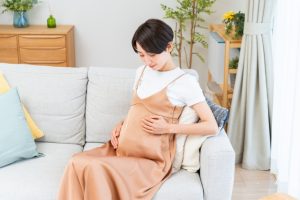The scope of grants has expanded
In January 2015, the “Measures for Intractable Diseases and Specific Chronic Childhood Diseases” came into force, and the medical expense subsidy system for intractable diseases and chronic childhood diseases was revised. The scope of “intractable diseases” and “specific chronic childhood diseases” was expanded, and people who were previously ineligible can now receive subsidies.
Children’s chronic diseases can take a long time to treat, and in some cases the medical expenses can be high. However, by expanding the scope of eligibility, these burdens can be alleviated. The Ministry of Health, Labor and Welfare has stated that “medical expense subsidies for intractable diseases will have both the purpose of promoting treatment research and the purpose of welfare, and we will build a fair and stable system that is widely understood by the public.” In order to improve the medical expense subsidy system for specific chronic childhood diseases, the Ministry of Health, Labor and Welfare has revised the system.
Learn about “incurable diseases”
The subject of the system reform is “intractable diseases.” What exactly is an intractable disease? There is no medical definition of an intractable disease, but it is generally a disease that is difficult to treat and has a chronic course. However, there are some diseases that cannot be cured completely, but with proper treatment and continued self-management, it is possible to live a normal life. Therefore, if there is medical expense subsidy, even if you have an intractable disease, you can continue to live a normal life while undergoing treatment.

What is a “designated intractable disease”?
So what kind of disease is a “designated intractable disease” that is eligible for medical expense subsidies? A designated intractable disease is one that has been deliberated by the Health and Science Council and designated by the Minister of Health, Labor and Welfare. It is one that meets the following requirements.
- The mechanism of disease onset is unknown
→ the cause is unknown, the pathology is not yet fully elucidated, etc. - There is no established treatment method
→ There is no treatment method at all, or only symptomatic treatment is available, etc. - Treatment takes a long time
→ When symptoms caused by the disease continue for a long period of time. - The number of patients is small
→ less than 0.1% of the population in Japan - There are certain criteria for diagnosis
→ There are indicators including the results of antibody tests, imaging tests, genetic analysis tests, physiological tests, pathological tests, etc., or physical findings
→ There are criteria approved by related academic societies
Before the law was enacted, the number of target diseases was 56, but after the law was enacted, the number of target diseases increased to 331. Furthermore, before the law was enacted, severity criteria were introduced for only 12 of the 56 diseases, and the target persons were people who met the criteria, but after the law was enacted, severity criteria were introduced for all diseases, and the target persons were people who met the criteria.
Learn about “Childhood Chronic Diseases”
Another subject of the system reform was the “specific chronic childhood diseases.” What kind of diseases are “specific chronic childhood diseases”? “Specific chronic childhood diseases” refer to diseases in children under the age of 18 that meet the following four criteria:
- It is a chronic disease.
- A long-term, life-threatening illness
- A disease whose symptoms and treatments reduce quality of life in the long term
- The illness will result in high medical expenses over the long term (after January 1, 2015)
What age group is it for?
The target age group is “children under 18 years old.” However, if it is determined that treatment will continue for a long time after the age of 18, those under 20 years old will be eligible.
What types of diseases are covered?
So, what types of diseases are covered? The following are listed below.
- Malignant Neoplasms
- Chronic Kidney Disease
- Chronic Respiratory Disease
- Chronic Heart Disease
- Endocrine Disorders
- Collagen Disease
- Diabetes
- Congenital Metabolic Syndrome
- Hematologic Disorders
- Immune Diseases
- Neuromuscular Diseases
- Chronic Digestive Diseases
- Syndromes involving changes in chromosomes or genes
- Skin Diseases
- Bone System Diseases
- Vascular System Diseases
Before the law came into effect, there were 514 eligible diseases, but after the law came into effect, the number of eligible diseases increased to 756. The target population remains the same, both before and after the law came into effect: “For all diseases, there is a set level of the disease condition that makes them eligible for medical expense subsidies, and those who meet that level are eligible.” If you were ineligible and were not approved for payment until now, we recommend that you check.
How to get certified for medical expenses assistance
1. How do I get certified for medical expenses assistance for an “incurable disease”?
So, what kind of procedures should you follow to receive medical expense assistance for intractable diseases? The steps are as follows.
- Visit a hospital with a doctor designated for intractable diseases and get a medical certificate.
- Submit the medical certificate and the required documents* at the prefectural or designated city office to apply for medical expenses assistance.
- We are waiting for review by prefectures and designated cities.
- If approved, the applicant will be issued a medical benefits certificate by the prefecture or designated city.
- Visit a designated medical institution and receive treatment.
※Required documents for 【2】
- Application for specific medical expenses payment certification
- Medical certificate
- Resident Certificate
- Documents that can verify your tax status, such as a municipal tax (non-tax) certificate
- Copy of health insurance card
Please note that the required documents may differ depending on the local government, so it is recommended that you check with your local health and welfare department or public health center. By the way, the “Medical Benefits Certificate” has a validity period. The period is set by the prefecture or designated city and is within one year from the date of application. You will need to apply for renewal every year. Also, the amount of self-payment has been reduced from 30% to 20% compared to before the law was enacted.
2. How can I be certified for medical expense assistance for “specific chronic childhood illnesses”?
So, what procedures should you follow to receive medical expense assistance for specific chronic childhood diseases? The steps are as follows:
- Visit a hospital with a designated doctor for chronic pediatric diseases and get a medical certificate.
- The guardian submits the medical certificate and the necessary documents* to the prefectural office or other relevant authority to apply for medical expenses assistance.
- Wait for review by the prefecture (or designated city/core city).
- If approved, the guardian will be issued a medical benefits certificate by the prefecture or other relevant authority.
- Visit a designated medical institution and receive treatment.
※Required documents for 【2】
- Application for certification of medical expenses for children with chronic specific diseases
- Medical opinion for specific chronic childhood diseases
- Resident Certificate
- Documents that can verify your tax status, such as a municipal tax (non-tax) certificate
- Copy of health insurance card
- Consent form for research use of medical opinion
Please note that the required documents may vary depending on the local government, so we recommend that you check with your local health and welfare department or public health center.
This “Medical Benefits Certificate” also has a validity period, which is determined by the prefecture, etc., and is within one year from the date of application. An application for renewal is required every year. There is a portion of the out-of-pocket expense that is borne by the household depending on the income of the household. However, compared to before the law came into effect, the percentage of the out-of-pocket expense has been reduced from 30% to 20%.

Find out early with “NIPT (New Prenatal Test)”
The scope of subsidies has been expanded for “incurable diseases” and “specific chronic childhood diseases,” but it is better to detect and deal with them early. That’s why we recommend ” NIPT (non-invasive prenatal testing) .” ” NIPT (non-invasive prenatal testing) ” is a non-conclusive test that can check for chromosomal abnormalities such as fetal trisomy 21 (Down syndrome) , trisomy 18 (Edwards syndrome) , and trisomy 13 (Patau syndrome) by estimating the amount of fetal DNA contained in blood drawn from the mother. It is said to be a test that can detect congenital diseases early, is highly accurate, and places little strain on the mother, and can be performed with peace of mind without risk to either the mother or the fetus, as it can be performed after 6 weeks of pregnancy, so if you are unsure, it may be a good idea to just give us a call.
Summary
We have summarized the subsidies for families with congenital diseases. Congenital diseases, whether incurable or chronic childhood diseases, require long-term treatment. It takes a lot of time to receive the subsidy, as there is an application and review process. Therefore, it is a good idea to receive the subsidy as soon as possible. Taking early action, such as ” testing with NIPT (non-invasive prenatal testing) ,” will lead to successful results.
【References】
- Center for Information on Chronic Childhood Diseases – Target diseases for measures against chronic childhood diseases
- Rare Disease Information Center – New measures against rare diseases starting in 2015
- Ministry of Health, Labor and Welfare – Current status of measures for intractable diseases and specific chronic childhood diseases
Article Editorial Supervisor

Dr. Masahiko Ito
Former Professor, University of Health and Welfare, Former Dean, Kashiwa Rehabilitation School, University of Medical Innovation, Member, Japanese Society for Gene Therapy and Japanese Society for Gene Research, etc.
Brief History
1974 – Entered the National Defense Medical College
1979 – Externship at the Department of Pediatrics, Faculty of Medicine, University of Sydney, Australia (Royal Alexandria Children’s Hospital)
1980 – Graduated from National Defense Medical College (1st class). Joined the Department of Pediatrics, National Defense Medical College
Worked at the Department of Pediatrics, National Defense Medical College Hospital, Self Defense Forces Central Hospital, Department of Neonatology, Hokkaido General Health Center for Children, and Mishuku Hospital of the National Public Service Mutual Aid Union
1989 – Research Fellow, Harvard Medical School, USA; Clinical Fellow, Tufts University School of Medicine, USA
1993 – Lecturer of Pediatrics, Saitama Medical College Junior College of Saitama Medical School
1994 – Lecturer of Pediatrics, Saitama Medical College
1997 – Associate Professor of Pediatrics, International University of Health and Welfare, Japan, working in the Department of Pediatrics, Sanno Hospital, Japan
2006 – Special Appointment Professor of Pediatrics, International University of Health and Welfare, International University of Health and Welfare (Pediatrics)
2008 – Honorary Director of Ihatove Hospital (Iwate Rosai Hospital)
2009 – Chairman, Hasuda Yotsuba Hospital, Kokoro no Kizuna Medical Corporation
2010 – Chairman, Ginza Cosmetic Surgery Clinic, Ginbikai Medical Corporation
2011 – Director of Shinkawa Hospital, Tsuruyokai Medical Corporation
2011 – Director of Chiba-Kashiwa Rehabilitation School of Medical Sosei University Educational Corporation
2014 – Director, Niigata Chuo Dialysis Clinic, Aoi Kai Medical Corporation
2016 – Deputy Director, Niigata Seiro Hospital, Aoi Kai Medical Corporation
2017 – Director, Higashi Katsushika Hospital, Fukujukai Medical Corporation
2018 – Director of International Department, AOI International Hospital, Aoi Kai Medical Corporation
Certifications
Doctor of Medicine
Registered as a care support specialist (Care Manager)
Board Certification in Allergology, Japanese Society of Allergology
Certified Industrial Physician by the Japan Medical Association
Board Certification in Pediatrics, Japan Pediatric Society
Passed the Japanese Society of Laser Medicine Medical Specialist Examination
Councilor of the Japanese Society of Pediatric Allergy
Councilor, Japanese Society of Pediatric Psychosomatic Medicine
Councilor, Japan-U.S. Medical Exchange Foundation
Councilor, Japan Internet Medical Association
Board member of the Japan Society for Computer Science
Chairman of the Board of Directors, Nightingale Spirit League
Chairman of the Board of Directors, NPO Defense Health Career Net
Advisor to the Medical Department of Kurokane Prison, Ministry of Justice, and other positions or activities
 中文
中文






















